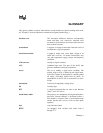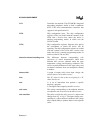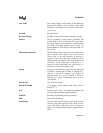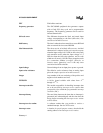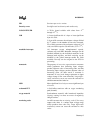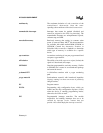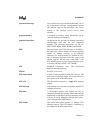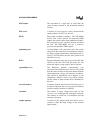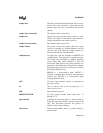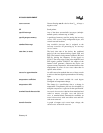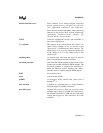
Glossary-7
GLOSSARY
prioritized interrupt Any maskable interrupt or nonmaskable NMI. Two of
the nonmaskable interrupts (unimplemented opcode
and software trap) are not prioritized; they vector
directly to the interrupt service routine when
executed.
program memory A partition of memory where instructions can be
stored for fetching and execution.
protected instruction An instruction that prevents an interrupt from being
acknowledged until after the next instruction
executes. The protected instructions are DI, EI,
DPTS, EPTS, POPA, POPF, PUSHA, and PUSHF.
PSW Processor status word. The high byte of the PSW is
the status byte, which contains one bit that globally
enables or disables servicing of all maskable
interrupts, one bit that enables or disables the PTS,
and six Boolean flags that reflect the state of the
current program. The low byte of the PSW is the
INT_MASK register. A push or pop instruction saves
or restores both bytes (PSW + INT_MASK).
PTS Peripheral transaction server. The microcoded
hardware interrupt processor.
PTSCB See PTS control block.
PTS control block A block of data required for each PTS interrupt. The
microcode executes the proper PTS routine based on
the contents of the PTS control block.
PTS cycle The microcoded response to a single PTS interrupt
request.
PTS interrupt Any maskable interrupt that is assigned to the PTS for
interrupt processing.
PTS mode A microcoded response that enables the PTS to
complete a specific task quickly. These tasks include
transferring a single byte or word, transferring a block
of bytes or words, managing multiple A/D conver-
sions, and generating PWM outputs.
PTS routine The entire microcoded response to multiple PTS
interrupt requests. The PTS routine is controlled by
the contents of the PTS control block.





